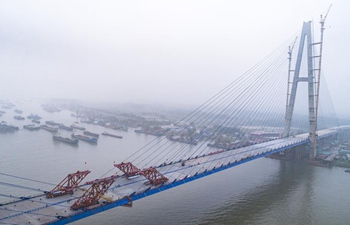WELLINGTON, May 17 (Xinhua) -- New Zealand scientists have taken a step closer to predicting marine heatwaves with new research finding a link between their formation and the length of time sea temperatures are warmer than normal.
Marine heatwave conditions continued in the Tasman Sea throughout April, with forecasters predicting these warmer than average seas may lead to a reduction in the intensity and duration of cold spells over winter.
For the past two summers, the Tasman Sea has experienced a marine heatwave, where periods of extremely warm sea surface temperatures persisted for a prolonged period of time and extended thousands of kilometers, according to a research led by the National Institute of Water and Atmospheric Research (NIWA) released on Friday.
They are potentially devastating for marine ecosystems but are expected to become more frequent under a range of climate change scenarios. Recent studies have shown they also have a strong influence on climate, temperature and rainfall patterns, the research shows.
NIWA scientist Erik Behrens, the lead author of the research paper which has just been published in the journal Frontiers in Marine Science, said that marine heatwaves are difficult to predict because there are numerous factors influencing how and when they occur.
However, using scientific models in combination with observations from satellites and autonomous ocean drifters, Behrens was able to show a relationship between changes in heat content in the Tasman Sea and the size and intensity of marine heatwaves over years and decades.
"Measuring ocean heat content is like measuring fever but in the ocean and tells you a lot about its wellbeing. If the ocean is already warm, the likelihood for marine heatwaves is enhanced because less surface heating is required to drive temperature extremes," Behrens said.
The research showed heat fluctuations in the Tasman Sea are dominated by more warm water being transported from the subtropics by the East Australian Current and Tasman Front with the heat content acting as a preconditioner for the development of marine heatwaves.













